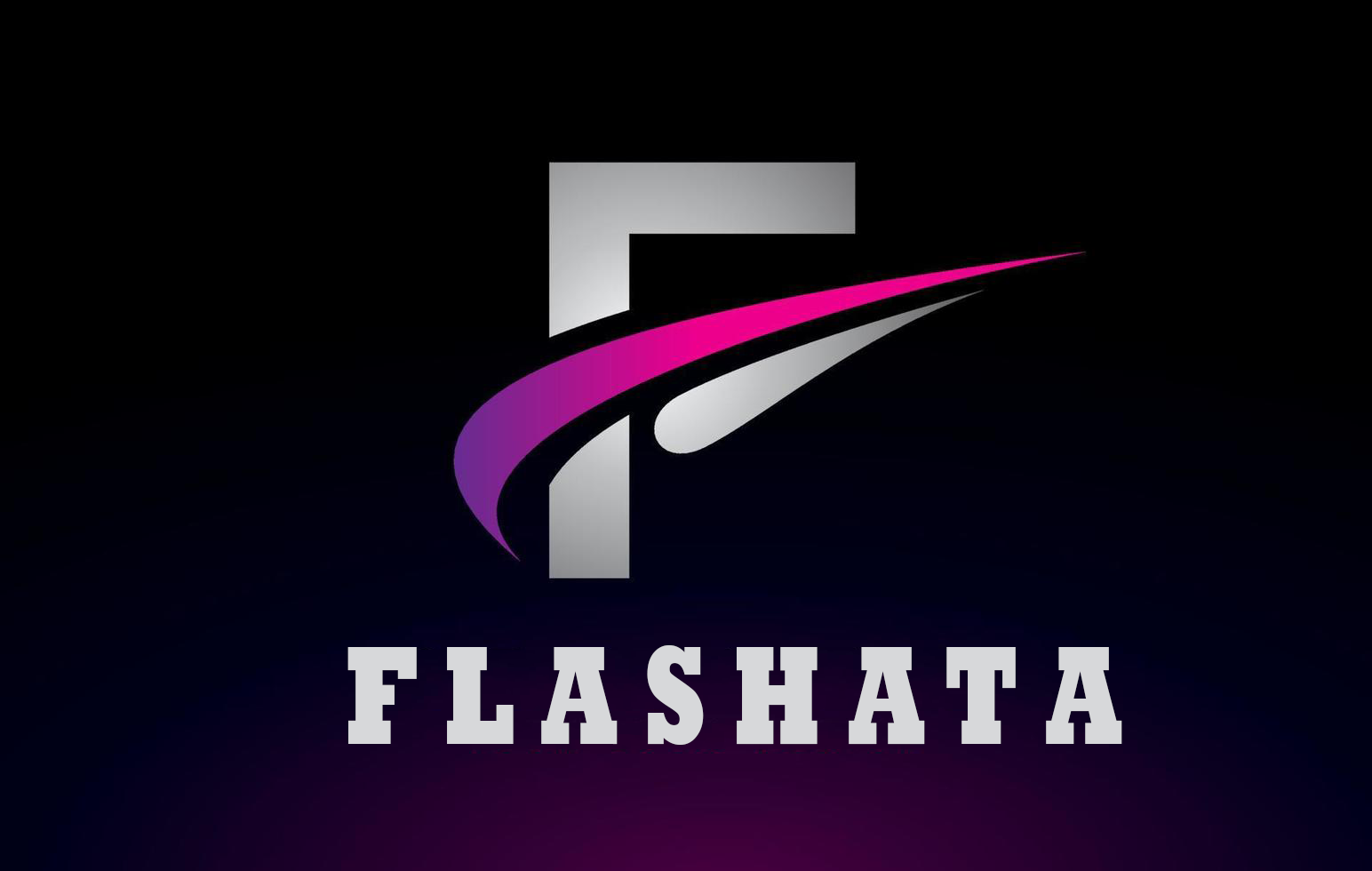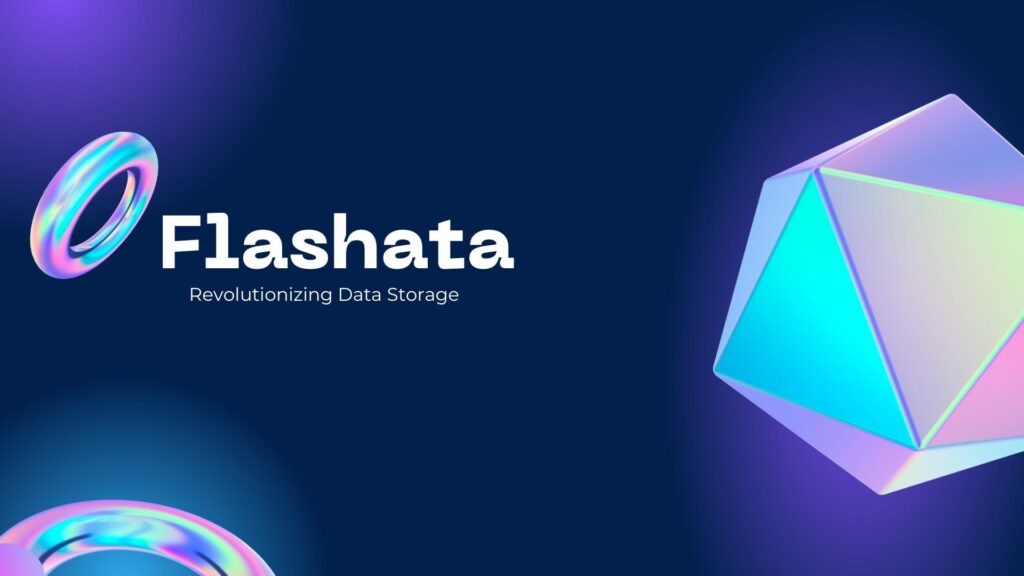Tech
Flashata: Revolutionizing Data Storage and Retrieval Speeds
Published
3 months agoon
By
Flintof
In the rapidly evolving world of technology, where the need for speed and efficiency is paramount, Flashata emerges as a groundbreaking solution. This cutting-edge technology is designed to enhance data storage and retrieval speeds, promising to revolutionize the way we handle and process information.
What is Flashata?
Flashata is an innovative technology that integrates high-speed flash memory to provide unprecedented data storage and retrieval capabilities. Unlike traditional hard drives and even contemporary solid-state drives (SSDs), Flashata leverages the latest advancements in flash memory technology to deliver performance that is several magnitudes faster.
The Need for Speed
In today’s data-driven world, businesses and individuals generate and consume massive amounts of data every second. From high-frequency trading in financial markets to real-time analytics in social media platforms, the demand for quick access to large datasets is ever-increasing. Traditional storage solutions, while reliable, often fall short in terms of speed and efficiency.
Flashata addresses these challenges head-on. By utilizing high-speed flash memory, it significantly reduces the latency associated with data retrieval. This means that users can access their data almost instantaneously, leading to faster decision-making and improved productivity.

How Flashata Works
Flashata operates by integrating advanced flash memory modules with sophisticated data management algorithms. These algorithms optimize the way data is stored and retrieved, ensuring minimal delays and maximum throughput. The core components of Flashata include:
- High-Speed Flash Memory: At the heart of Flashata is its state-of-the-art flash memory, which offers lightning-fast read and write speeds. This memory is designed to handle intensive data operations without bottlenecks.
- Intelligent Data Management: Flashata employs intelligent algorithms that manage data storage efficiently. These algorithms prioritize frequently accessed data, ensuring that it is always readily available.
- Scalability: Flashata is designed to scale effortlessly with growing data demands. Whether it is a small business or a large enterprise, Flashata can be configured to meet varying storage needs without compromising on performance.
Key Benefits
The adoption of Flashata brings numerous benefits to both businesses and individual users:
- Unmatched Speed: The primary advantage of Flashata is its speed. With access times significantly faster than traditional storage solutions, users can perform data-intensive tasks without delays.
- Enhanced Productivity: Faster data access translates to enhanced productivity. Tasks that previously took hours can now be completed in minutes, giving businesses a competitive edge.
- Energy Efficiency: Flashata is designed to be energy-efficient. By reducing the time required for data operations, it also reduces the energy consumption associated with these tasks.
- Reliability: Flash memory is known for its durability and reliability. Flashata leverages these qualities, ensuring that data is not only accessible quickly but also securely stored.
Applications of Flashata
The applications of Flashata are vast and varied. Some of the key areas where Flashata can make a significant impact include:
- Big Data Analytics: In the realm of big data, the ability to process and analyze large datasets quickly is crucial. Flashata’s high-speed capabilities make it an ideal solution for big data analytics.
- Artificial Intelligence and Machine Learning: AI and ML models require rapid access to large amounts of data for training and inference. Flashata’s fast data retrieval speeds can accelerate these processes.
- Cloud Computing: In cloud environments, where data is accessed by multiple users simultaneously, Flashata can ensure seamless performance and reduced latency.
- Gaming and Entertainment: For gamers and content creators, Flashata can enhance the overall experience by reducing load times and enabling smooth performance.
Technical Specifications
Hardware Components
Flashata comprises high-speed flash memory chips, advanced controllers, and sophisticated interfaces designed to maximize performance. These components work in harmony to deliver exceptional read/write speeds and reliable data storage.
Software Integration
The integration of Flashata with existing software systems is seamless, thanks to its robust compatibility features. It supports major operating systems and can be easily integrated into various applications, enhancing their performance.
Performance Benchmarks
Flashata sets new benchmarks in data storage performance, offering significantly higher read/write speeds compared to traditional storage solutions. Benchmarks indicate improvements of up to 10 times in data transfer rates, making it ideal for high-demand environments.
Storage Capacity
With Flashata, storage capacity is no longer a limiting factor. It offers scalable storage solutions ranging from terabytes to petabytes, catering to diverse needs from personal use to large-scale enterprise applications.
Energy Efficiency
Flashata is designed with energy efficiency in mind. Its advanced architecture minimizes power consumption, reducing operational costs and environmental impact, making it a sustainable choice for data storage.
Compatibility with Existing Systems
Flashata’s compatibility with existing systems ensures a smooth transition from older storage technologies. It supports various interfaces and protocols, enabling easy integration with current infrastructure.
Applications
Data Centers
Flashata is a game-changer for data centers, providing the speed and reliability needed to handle massive amounts of data efficiently. It enhances data processing capabilities and reduces latency, leading to improved overall performance.
Cloud Computing
In the realm of cloud computing, Flashata offers unparalleled speed and efficiency. It accelerates data access and retrieval, enabling faster cloud services and better user experiences for both consumers and businesses.
Personal Computing
For personal computing, Flashata transforms the user experience by significantly reducing boot times and enhancing application performance. It provides the speed and storage capacity needed for modern computing tasks.
Enterprise Solutions
Enterprises benefit from Flashata’s high-speed data processing and large storage capacities. It supports critical business applications, ensuring smooth operations and quick access to vital information.
Mobile Devices
Flashata technology extends to mobile devices, offering fast data storage and retrieval capabilities. This leads to quicker app launches, smoother multitasking, and an overall enhanced user experience.
Internet of Things (IoT)
In the IoT landscape, Flashata enables fast data processing and storage for connected devices. Its speed and reliability are crucial for the seamless operation of smart devices and systems.
Artificial Intelligence and Machine Learning
AI and machine learning applications require fast and efficient data processing. Flashata meets these demands by providing the high-speed storage needed for training models and processing large datasets.
Benefits
Speed Improvements
Flashata’s primary benefit is its speed. It dramatically reduces data access and retrieval times, enhancing overall system performance and efficiency.
Cost Efficiency
Despite its advanced features, Flashata offers cost-efficient solutions. Its high performance and reliability reduce long-term operational costs, making it a smart investment for businesses.
Enhanced Data Security
Flashata incorporates advanced security features to protect data from unauthorized access and cyber threats. This ensures the integrity and confidentiality of stored information.
Scalability
Flashata’s scalable architecture allows for easy expansion of storage capacities. This makes it suitable for growing businesses and evolving data storage needs.
Reliability
Flashata is built for reliability, with features that ensure data integrity and minimize the risk of data loss. Its robust design supports continuous operations, even under heavy workloads.
User Experience
Users benefit from Flashata’s fast performance and reliability, which translate to quicker access to data and a smoother overall experience.
Challenges and Limitations
Cost Considerations
While Flashata offers numerous benefits, its initial cost can be a barrier for some users. However, the long-term savings in operational costs can offset this investment.
Technological Barriers
The implementation of Flashata requires overcoming certain technological barriers, such as ensuring compatibility with existing systems and infrastructure.
Integration Issues
Integrating Flashata into existing systems can pose challenges, particularly for older systems that may not support the latest interfaces and protocols.
Maintenance and Updates
Maintaining and updating Flashata systems requires specialized knowledge and resources, which can be a challenge for some organizations.
Market Competition
Flashata faces stiff competition from other advanced storage technologies. Staying ahead requires continuous innovation and improvement.
Latest Innovations
Recent Advancements in Flashata Technology
Recent advancements in Flashata technology have focused on increasing storage capacities, improving read/write speeds, and enhancing overall reliability.
New Product Releases
Several new Flashata products have been released, each offering unique features and improvements over previous versions. These products cater to different market segments and use cases.
Research and Development Efforts
Ongoing research and development efforts aim to further enhance Flashata technology, exploring new materials, architectures, and methods to boost performance and efficiency.
Case Studies of Recent Implementations
Recent case studies highlight the successful implementation of Flashata in various industries, showcasing its benefits and proving its value in real-world applications.
Future Prospects
Predicted Advancements in Flashata
Future advancements in Flashata technology are expected to include even faster read/write speeds, larger storage capacities, and improved energy efficiency.
Potential Market Growth
The market for Flashata technology is predicted to grow significantly, driven by the increasing demand for high-speed data storage and retrieval solutions.
Emerging Trends in Data Storage
Emerging trends in data storage, such as the rise of edge computing and the growing importance of data security, are likely to influence the development of Flashata technology.
Industry Expert Predictions
Industry experts predict that Flashata will continue to lead the way in data storage innovation, setting new standards for performance and reliability.
Comparative Analysis
Comparison with Traditional Hard Drives
Compared to traditional hard drives, Flashata offers significantly higher read/write speeds, better reliability, and lower power consumption.

Comparison with SSDs
While SSDs are a significant improvement over traditional hard drives, Flashata takes performance to the next level, offering even faster speeds and more advanced features.
Comparison with Other Emerging Storage Technologies
Flashata stands out among other emerging storage technologies due to its unique combination of speed, reliability, and scalability.
User Guides or Tutorials
Installation Guide
A detailed installation guide provides step-by-step instructions for setting up Flashata, ensuring a smooth and hassle-free installation process.
Configuration Settings
Guidance on configuration settings helps users optimize Flashata for their specific needs, maximizing performance and efficiency.
Optimization Tips
Optimization tips offer practical advice on how to get the most out of Flashata, from enhancing speed to improving data security.
Troubleshooting Common Issues
A comprehensive troubleshooting guide addresses common issues users may encounter, providing solutions to ensure smooth operation.
Upgrading Flashata
Information on upgrading Flashata systems helps users stay up-to-date with the latest advancements and improvements.
Conclusion
Flashata represents a significant leap forward in the realm of data storage and retrieval technologies. By integrating high-speed flash memory and intelligent data management, it offers a solution that meets the growing demands for speed and efficiency in today’s digital world. As businesses and individuals continue to seek faster and more reliable ways to handle data, Flashata stands poised to lead the charge, setting new standards for performance and productivity.
FAQs on Flashata Technology
Q1: What is Flashata? A1: Flashata is a cutting-edge technology designed to enhance data storage and retrieval speeds by integrating high-speed flash memory. It aims to provide faster access to data, improving overall system performance and efficiency.
Q2: How does Flashata work? A2: Flashata utilizes advanced flash memory technology to store and retrieve data at high speeds. By optimizing the way data is written and accessed, Flashata reduces latency and increases throughput, making it ideal for applications that require rapid data processing.
Q3: What are the benefits of using Flashata? A3: The main benefits of using Flashata include:
- Significantly faster data access and retrieval times.
- Enhanced overall system performance.
- Reduced latency in data processing.
- Improved efficiency in data-intensive applications.
- Lower power consumption compared to traditional storage solutions.
Q4: In what applications can Flashata be used? A4: Flashata is versatile and can be used in a wide range of applications, including:
- High-performance computing (HPC)
- Big data analytics
- Databases and data warehousing
- Cloud computing
- Internet of Things (IoT) devices
- Enterprise storage systems
Q5: How does Flashata compare to traditional storage solutions? A5: Compared to traditional storage solutions like hard disk drives (HDDs) and standard solid-state drives (SSDs), Flashata offers significantly higher speeds and lower latency. This makes it a superior choice for applications that require rapid data access and processing.
Q6: Is Flashata compatible with existing systems? A6: Yes, Flashata is designed to be compatible with existing systems. It can be integrated into current IT infrastructures with minimal modifications, allowing organizations to upgrade their storage capabilities without significant downtime or disruption.
Q7: What kind of flash memory does Flashata use? A7: Flashata employs high-speed NAND flash memory, which is known for its durability, reliability, and performance. This type of memory is well-suited for high-speed data access and retrieval applications.
Q8: How does Flashata enhance data security? A8: Flashata incorporates advanced encryption and data protection features to ensure that data stored and retrieved is secure. This includes hardware-based encryption, secure erase functions, and robust access controls to protect sensitive information.
Q9: Can Flashata be scaled for larger storage needs? A9: Yes, Flashata is highly scalable and can be configured to meet the storage needs of various organizations, from small businesses to large enterprises. Its architecture allows for easy expansion as data storage requirements grow.
Q10: Where can I learn more about Flashata? A10: For more information about Flashata, including technical specifications, case studies, and deployment options, you can visit the official Flashata website or contact their sales and support teams.
You may like
Tech
Understanding Blackboarduct and Its Role in Modern Education
Published
2 weeks agoon
October 8, 2024By
Rocklord
Blackboarduct is a versatile online platform designed to enhance the learning experience for both educators and students. As an advanced learning management system, it offers various tools that support teaching, learning, and collaboration in a digital environment. This article explores Blackboarduct in detail, covering its features, benefits, and how it can be effectively used to support education in both traditional and online settings.
What is Blackboarduct?
Blackboarduct is a web-based learning management system that facilitates the delivery of educational content and communication between students and instructors. It serves as a centralized hub where educators can organize course materials, create assignments, and track student progress. At the same time, students can access their courses, submit assignments, and interact with their peers and instructors. Blackboarduct is designed to be flexible, catering to a wide range of educational settings, from K-12 schools to higher education institutions and even corporate training programs.
Key Features of Blackboarduct
Blackboarduct is packed with features that make it an indispensable tool for education. Here are some of the key features that contribute to its effectiveness:
Course Management
Blackboarduct allows educators to create and manage courses with ease. Instructors can upload a variety of course materials, including documents, videos, and links to external resources. The platform also supports the creation of assignments, quizzes, and tests, which can be automatically graded. This feature simplifies the process of organizing and delivering course content, ensuring that students have easy access to all the resources they need.
Communication Tools
Effective communication is essential in any educational environment. Blackboarduct offers several communication tools that help keep students and instructors connected. These include discussion boards, messaging systems, and announcements. Discussion boards facilitate class discussions and peer-to-peer learning, while messaging systems allow for private communication between students and instructors. Announcements help instructors share important information with the entire class.
Assignment Submission and Grading
Blackboarduct streamlines the process of submitting and grading assignments. Students can submit their work directly through the platform, where it is securely stored. Instructors can then grade the assignments and provide feedback within the platform. This feature also includes tools for managing deadlines and tracking student progress, making it easier for instructors to monitor student performance over time.
Gradebook
The gradebook feature in Blackboarduct provides a comprehensive view of student performance. Instructors can use it to record grades for assignments, quizzes, and tests. The gradebook also allows for easy calculation of final grades, helping instructors to assess student progress throughout the course. Additionally, students can access their grades at any time, giving them a clear understanding of their standing in the course.
Mobile Accessibility
One of the standout features of Blackboarduct is its mobile accessibility. The platform is available as a mobile app for both iOS and Android devices, allowing students and instructors to access course materials and communicate on the go. This flexibility ensures that learning and teaching can continue regardless of location, making it easier for users to stay engaged with their courses.
Benefits of Using Blackboarduct
Blackboarduct offers several benefits that make it a valuable tool for education. Here are some of the key advantages of using the platform:
Enhanced Learning Experience
Blackboarduct enhances the learning experience by providing a centralized location for all course materials and activities. Students can easily access lectures, assignments, and other resources, which helps them stay organized and focused. The platform’s interactive features, such as discussion boards and quizzes, also contribute to a more engaging learning environment.
Flexibility and Convenience
Blackboarduct offers flexibility in how and when students access their courses. The platform is available online, meaning students can log in from any device with an internet connection. This is particularly beneficial for students with busy schedules or those who need to balance their studies with other commitments. The mobile app further adds to this convenience by allowing students to access their courses on the go.
Efficient Course Management
For educators, Blackboarduct simplifies the process of managing courses. The platform’s intuitive interface makes it easy to upload materials, create assignments, and track student progress. This efficiency allows instructors to focus more on teaching and less on administrative tasks. The platform also provides tools for monitoring student engagement, helping instructors identify students who may need additional support.
Improved Communication
Communication is a critical component of effective teaching and learning. Blackboarduct’s communication tools facilitate interaction between students and instructors, as well as among students themselves. These tools help create a sense of community within the course, which can lead to better learning outcomes. Instructors can also use announcements and messaging to keep students informed and engaged.
Comprehensive Assessment Tools
Blackboarduct offers a range of assessment tools that help instructors evaluate student performance. These include quizzes, tests, and assignments, all of which can be customized to meet the needs of the course. The platform also supports various grading options, allowing instructors to provide detailed feedback to students. This comprehensive approach to assessment helps ensure that students receive the support they need to succeed.
How to Get Started with Blackboarduct
Getting started with Blackboarduct is a straightforward process. For educators, the first step is to create an account and set up your courses. This involves uploading course materials, creating assignments, and configuring the gradebook. Blackboarduct provides tutorials and help resources that guide you through each step, making it easy to get your courses up and running.
For students, the process begins with logging in using the credentials provided by your educational institution. Once logged in, you can access your courses, view materials, and submit assignments. It’s important to explore the platform’s features and familiarize yourself with how it works. This will help you make the most of the tools available and stay on top of your coursework.
Best Practices for Using Blackboarduct
To get the most out of Blackboarduct, consider these best practices:
Organize Course Materials
Keep your course materials well-organized within the platform. Use folders and modules to structure content in a way that is easy for students to navigate. This will help students find what they need quickly and reduce confusion.
Communicate Regularly
Use Blackboarduct’s communication tools to stay in touch with your students. Regular communication helps keep students engaged and informed. Consider using announcements to share important updates and reminders with the entire class.
Encourage Student Interaction
Foster a collaborative learning environment by encouraging students to participate in discussion boards and group activities. Interaction among students can enhance the learning experience and help build a sense of community within the course.
Provide Timely Feedback
Use the platform’s grading and feedback tools to provide students with timely and constructive feedback on their work. This feedback is crucial for helping students understand their progress and areas where they can improve.
Take Advantage of Mobile Access
Encourage students to use the Blackboarduct mobile app to stay connected to their courses. Mobile access ensures that students can keep up with their studies, even when they are on the move. This flexibility can lead to higher engagement and better learning outcomes.
Conclusion
Blackboarduct stands out as a vital tool in modern education, offering a seamless platform for course management, communication, and student engagement. Its versatile features cater to both educators and students, providing flexibility and convenience in accessing educational resources. By fostering collaboration, streamlining course organization, and offering comprehensive assessment tools, Blackboarduct enhances the overall learning experience. Whether used in traditional or online settings, it supports effective teaching and learning, making it an invaluable resource in today’s educational landscape.
FAQs
What is Blackboarduct and how does it work?
Blackboarduct is an online learning management system that helps educators create and manage courses. Students can access course materials, submit assignments, and communicate with instructors through the platform.
Can Blackboarduct be accessed on mobile devices?
Yes, Blackboarduct is accessible on mobile devices through a dedicated app available for both iOS and Android. This allows students and instructors to access their courses from anywhere.
How does Blackboarduct support communication between students and instructors?
Blackboarduct offers several communication tools, including discussion boards, messaging, and announcements. These tools help keep students and instructors connected and facilitate effective communication throughout the course.
Is Blackboarduct secure for storing course materials and student information?
Yes, Blackboarduct is designed with security in mind. The platform uses robust data protection measures to ensure that course materials and student information are kept safe and secure.
Can Blackboarduct be integrated with other educational tools?
Yes, Blackboarduct supports the integration of various third-party tools and applications. This allows educators to enhance their courses with additional features and resources.
Tech
Gomyfinance.com Create Budget: Managing Your Finances Effectively
Published
3 weeks agoon
October 2, 2024By
Rocklord
Why Budgeting Matters
Budgeting is often seen as the cornerstone of financial planning. By creating a budget, individuals can track their income, control their spending, and set goals for the future. Here’s why budgeting is essential:
- Financial Awareness: Budgeting offers a clear picture of how much money is coming in and going out. It helps people become aware of their financial situation and aids in making informed decisions about their spending habits.
- Expense Management: By categorizing expenditures, individuals can see where they are overspending and adjust their behavior. This ensures that spending is aligned with priorities and goals.
- Debt Reduction: Without a clear plan, debt can quickly spiral out of control. A budget helps allocate money toward paying off debts efficiently, preventing further accumulation.
- Savings: A well-structured budget ensures that a portion of income is saved regularly. These savings can be used for emergencies, investments, or long-term goals, such as buying a home or planning for retirement.
- Financial Freedom: Consistent budgeting allows individuals to achieve financial stability and independence. It provides a sense of control over finances and reduces financial stress.
Introduction to Gomyfinance.com
Gomyfinance.com is a digital platform designed to help individuals take charge of their personal finances. It offers a wide array of tools, guides, and services aimed at assisting users with financial planning, savings, and debt management. One of its primary features is its budget creation tool, which is user-friendly and adaptable to various financial situations.
The website caters to a wide audience, from beginners who are just starting on their financial journey to seasoned individuals looking for advanced financial management solutions. By offering personalized budget plans, Gomyfinance.com ensures that users can track their income and expenses effectively while also setting realistic financial goals.
Key Features of Gomyfinance.com’s Budget Creation Tool
Gomyfinance.com’s budget creation tool is designed to simplify the process of budgeting. Some of its standout features include:
- User-Friendly Interface: The platform provides an intuitive interface, making it easy for even non-financial experts to navigate. Users can quickly input their income and expenses and receive instant feedback on their budget.
- Customizable Categories: The tool allows users to categorize their expenses based on personal preferences. Categories like housing, groceries, entertainment, transportation, and insurance can be customized to suit individual needs.
- Automated Insights: Gomyfinance.com generates insights and suggestions based on the user’s financial data. It flags areas where users may be overspending and recommends ways to cut down on unnecessary expenses.
- Goal Setting: Users can set short-term and long-term financial goals within the platform. The budget tool helps allocate a portion of income toward achieving these goals, whether it’s saving for a vacation, paying off credit card debt, or building an emergency fund.
- Progress Tracking: The platform offers visual representations of users’ financial progress. Through graphs and charts, individuals can monitor their spending patterns, savings growth, and debt reduction over time.
- Integration with Other Financial Tools: Gomyfinance.com integrates seamlessly with bank accounts, credit cards, and other financial platforms, allowing for automatic updates and real-time tracking of income and expenses.
Step-by-Step Guide to Creating a Budget on Gomyfinance.com
1. Gather Financial Information
Before starting the budgeting process, it’s important to have a clear understanding of your current financial situation. Gather information about your monthly income (from salary, side gigs, or other sources) and list out your monthly expenses. Expenses can be divided into fixed expenses (like rent, mortgage, and insurance) and variable expenses (such as groceries, entertainment, and travel).
Having this data ready will make it easier to create a realistic budget that accurately reflects your financial situation.
2. Set Up Your Gomyfinance.com Account
To create a budget on Gomyfinance.com, you’ll first need to sign up for an account. The process is simple and typically involves providing basic details like your name, email, and preferred password. Once your account is set up, you’ll have access to all of the platform’s financial tools, including the budget creation feature.
3. Input Your Income
The first step in the budget creation process is entering your monthly income. Gomyfinance.com allows you to input multiple income sources, ensuring that all earnings are accounted for. If your income varies from month to month, you can enter an average or estimate, which can be adjusted as your income changes.
4. Enter Your Fixed Expenses
Next, you’ll need to enter your fixed expenses. These are the costs that remain constant every month, such as rent, utility bills, loan payments, and insurance premiums. These expenses are typically non-negotiable and must be accounted for before considering other expenses.
Gomyfinance.com provides default categories for fixed expenses, but users can also customize these categories to reflect their unique financial obligations.
5. Enter Your Variable Expenses
Variable expenses fluctuate each month, making them harder to track without a budget. Common variable expenses include groceries, dining out, entertainment, and transportation. By listing these expenses, Gomyfinance.com helps users identify areas where they can potentially cut back.
One of the most useful features of the Gomyfinance.com platform is its ability to analyze spending patterns and offer suggestions for reducing variable expenses. Users can set spending limits for each category to help them stay within budget.
6. Set Financial Goals
One of the core aspects of successful budgeting is setting financial goals. These goals can range from short-term objectives (such as building an emergency fund) to long-term plans (like buying a house or saving for retirement).
Gomyfinance.com’s goal-setting feature allows users to allocate funds toward these objectives. For instance, if your goal is to save $10,000 for a down payment on a house, the platform will suggest how much you need to save each month to reach your goal within a specific time frame.
7. Track and Adjust Your Budget
Budgeting isn’t a one-time task – it requires ongoing monitoring and adjustments. Gomyfinance.com allows users to track their spending in real-time. If an unexpected expense arises or if income changes, the platform allows for quick adjustments to the budget, ensuring that users remain on track toward their financial goals.
Regularly reviewing your budget is essential for long-term success. Gomyfinance.com offers monthly summaries, helping users assess their financial progress and make any necessary adjustments.
8. Take Advantage of Insights and Recommendations
Gomyfinance.com offers personalized insights based on your spending habits. If the platform detects that you are consistently overspending in a particular category, it will recommend adjustments. Additionally, it highlights areas where you can save more or allocate additional funds toward debt repayment or investments.
These insights are particularly valuable for individuals who are new to budgeting, as they provide actionable advice on how to optimize finances.
Tips for Creating an Effective Budget on Gomyfinance.com
- Be Realistic: When creating your budget, make sure your expectations align with your financial reality. Overestimating income or underestimating expenses can lead to frustration and failure to stick to the budget.
- Include All Expenses: Even small, seemingly insignificant expenses can add up over time. Ensure that you account for all expenditures, no matter how minor.
- Prioritize Debt Repayment: If you have outstanding debt, make it a priority in your budget. Allocate as much as you can toward paying off high-interest debt, as this will free up more money for savings and investments in the future.
- Regularly Revisit Your Budget: Your financial situation may change over time. Whether your income increases or you face unexpected expenses, it’s important to adjust your budget accordingly. Gomyfinance.com makes it easy to update and track changes to your budget as needed.
- Stay Committed: Sticking to a budget can be challenging, especially in the early stages. However, consistency is key to achieving long-term financial success. Use Gomyfinance.com’s progress tracking and insights to stay motivated and committed to your financial goals.
Conclusion
Creating and maintaining a budget is one of the most effective ways to manage personal finances, reduce debt, and achieve long-term financial goals. Gomyfinance.com provides users with a powerful set of tools and resources to simplify the budgeting process. By offering a user-friendly interface, customizable categories, and personalized insights, the platform ensures that individuals can take control of their finances with ease.
Whether you’re just starting your financial journey or looking to optimize your existing budget, Gomyfinance.com is an invaluable resource. By using the platform to create and stick to a budget, individuals can achieve greater financial freedom, reduce stress, and work toward a more secure financial future.
Tech
VMCS: Understanding Virtual Machine Control Structures
Published
4 weeks agoon
September 22, 2024By
Rocklord
1. Introduction to Virtualization
Virtualization is a technology that has revolutionized the way computing resources are used. It allows for the creation of virtual instances of physical hardware, enabling multiple operating systems and applications to run concurrently on a single physical machine. This is achieved through the use of hypervisors, which manage and allocate resources to each virtual machine (VM).
Types of Virtualization:
- Server Virtualization: Partitioning a physical server into multiple virtual servers, each running its own operating system and applications.
- Desktop Virtualization: Running a desktop environment on a centralized server, enabling remote access to desktop resources.
- Network Virtualization: Combining hardware and software network resources into a single software-based administrative entity.
- Storage Virtualization: Pooling physical storage from multiple devices into a single storage device managed from a central console.
2. Hypervisors and Their Role
Hypervisors are the backbone of virtualization technology. They act as an intermediary between the hardware and the virtual machines, managing resources and ensuring isolation between different VMs. Hypervisors can be categorized into two types:
- Type 1 Hypervisor (Bare-metal): Runs directly on the hardware. Examples include VMware ESXi, Microsoft Hyper-V, and Xen.
- Type 2 Hypervisor (Hosted): Runs on a host operating system, which in turn runs on the hardware. Examples include VMware Workstation and Oracle VirtualBox.
3. What is VMCS?
The Virtual Machine Control Structure (VMCS) is a data structure used by Intel’s Virtual Machine Extensions (VMX) technology, which is part of the x86 architecture. VMCS is crucial for managing the execution of guest operating systems in a virtualized environment. It provides the means to control the transitions between guest and host execution contexts.
Key Functions of VMCS:
- Guest and Host State Management: Maintains the state of both the guest and host, allowing seamless transitions between them.
- Control Fields: Includes settings that dictate the operation of the virtual machine, such as interruptibility state and exit controls.
- Exit Information: Captures information about the conditions under which the guest exited, helping the hypervisor manage exceptions and interrupts.
4. Structure of VMCS
The VMCS is divided into several sections, each serving a specific purpose in managing the virtual machine. These sections include:
- Guest-State Area: Stores the state of the virtual CPU (vCPU) when a VM exit occurs. This includes registers, segment selectors, and control registers.
- Host-State Area: Holds the state of the host processor that needs to be loaded when the VM resumes operation.
- VM-Execution Control Fields: Contains settings that control the operation of the VM, such as handling of I/O operations and exception handling.
- VM-Exit Control Fields: Specifies conditions that trigger a VM exit and what information should be saved during this process.
- VM-Entry Control Fields: Determines how the guest state is loaded when transitioning from host to guest mode.
- VM-Exit Information Fields: Provides information about the exit, such as the reason for the exit and any relevant error codes.
5. VMCS in Operation
The operation of VMCS involves several steps, which are critical for maintaining the isolation and performance of virtual machines:
- Initialization: The VMCS is initialized with the guest and host state information. This includes setting up control fields and determining conditions for VM exits.
- VM Entry: The hypervisor transitions control to the guest OS by loading the guest state from the VMCS and executing the guest code.
- Guest Execution: The guest operates in its allocated space, performing tasks without interfering with the host or other VMs.
- VM Exit: When a predefined condition is met (e.g., an interrupt, exception, or I/O operation), control is transferred back to the hypervisor. The VMCS captures the guest state and provides exit information to the hypervisor.
- VM Resume: The hypervisor processes the exit information, makes necessary adjustments, and resumes the guest by loading its state from the VMCS.
6. Advantages of Using VMCS
The use of VMCS offers several benefits in a virtualized environment:
- Performance Optimization: By providing direct access to hardware resources, VMCS minimizes the overhead associated with context switching and resource management.
- Security and Isolation: VMCS ensures that each VM operates in a separate environment, preventing interference and enhancing security.
- Scalability: VMCS allows for efficient management of multiple VMs, enabling scalability in cloud and enterprise environments.
- Flexibility: Supports a wide range of operating systems and applications, facilitating diverse workloads on a single platform.
7. VMCS and Intel VT-x
Intel VT-x (Virtualization Technology) is a set of processor extensions that enable efficient virtualization on Intel processors. VMCS is a core component of VT-x, providing the necessary infrastructure for managing guest and host transitions.
Features of Intel VT-x:
- Extended Page Tables (EPT): Enhances memory management by allowing the guest to maintain its own page tables.
- Unrestricted Guest: Enables the guest to run in real mode or protected mode without additional intervention from the hypervisor.
- VMFUNC Instruction: Allows guests to perform specific functions without triggering a VM exit, improving performance.
8. Challenges and Considerations
While VMCS and virtualization technology offer numerous benefits, there are also challenges and considerations to keep in mind:
- Complexity: Setting up and managing VMCS requires a deep understanding of hardware and software interactions.
- Performance Overhead: Although VMCS minimizes overhead, there is still some performance impact compared to running directly on hardware.
- Security Risks: Misconfiguration of VMCS or vulnerabilities in the hypervisor can lead to security breaches and unauthorized access.
- Compatibility: Ensuring compatibility between different hardware and software components can be challenging, especially in heterogeneous environments.
9. Applications of VMCS
VMCS is widely used across various industries and applications, including:
- Cloud Computing: Enables the creation and management of virtual machines in cloud environments, providing scalable and flexible computing resources.
- Data Centers: Facilitates efficient resource allocation and management in data centers, reducing costs and improving utilization.
- Development and Testing: Allows developers to create isolated environments for testing and development, reducing the risk of conflicts and improving software quality.
- Security: Supports the implementation of security features such as sandboxing and isolation, protecting sensitive data and applications from threats.
10. Future Trends in Virtualization and VMCS
The field of virtualization is constantly evolving, with new trends and technologies shaping its future:
- Edge Computing: As computing moves closer to the edge of the network, virtualization will play a key role in managing distributed resources and workloads.
- Containerization: While traditional virtualization focuses on VMs, containerization offers a lightweight alternative for deploying applications, often used in conjunction with VMs.
- Artificial Intelligence and Machine Learning: Virtualization can enhance AI and ML workloads by providing scalable and flexible computing environments.
- Hybrid and Multi-Cloud Environments: The rise of hybrid and multi-cloud environments will drive the need for advanced virtualization solutions that can seamlessly manage resources across different platforms.
Conclusion
Virtual Machine Control Structures (VMCS) are a fundamental component of modern virtualization technology. They enable efficient management of virtual machines, providing the performance, security, and flexibility needed for a wide range of applications. As virtualization continues to evolve, VMCS will remain a critical element in the architecture of future computing environments, driving innovation and efficiency in the digital age.
Trending
-

 Entertainment4 months ago
Entertainment4 months agoIlijecomix: The Ultimate Guide to Digital Comics
-

 Blog4 months ago
Blog4 months agoEugenio Pallisco: A Visionary’s Journey Shaping Michigan’s Future
-

 Blog3 months ago
Blog3 months agoThe //vital-mag.net Blog: A Detailed Overview
-

 Life style4 months ago
Life style4 months agoGeekzilla Radio: Unleashing Geek Culture through Airwaves
-

 Entertainment4 months ago
Entertainment4 months agoArcane Lineage Trello: Your Ultimate Guide to Mastering the Game
-

 Tech4 months ago
Tech4 months agoGeekzilla Autos: The Revolution in the Automotive Industry
-

 Entertainment4 months ago
Entertainment4 months agoGeekzilla Podcast: A Geek’s Guide to Everything
-

 Health3 months ago
Health3 months agoTollgate Orthodontics: Your Path to a Perfect Smile in Rhode Island
